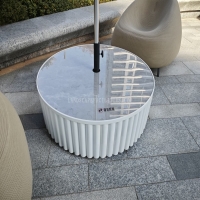Welcome to the website for landscape facilities products and knowledge.
How do landscape tables in outdoor history exhibits enhance storytelling?
Landscape tables in outdoor history exhibits serve as powerful tools to enhance storytelling by blending visual, tactile, and spatial elements. These interactive displays transform historical narratives into immersive experiences, allowing visitors to engage with the past in a tangible way.
By presenting topographical maps, timelines, and artifacts in a three-dimensional format, landscape tables help contextualize events within their natural or built environments. This spatial representation fosters a deeper understanding of historical relationships—how geography influenced decisions, how communities evolved, and how conflicts unfolded.
Moreover, the tactile nature of landscape tables invites hands-on exploration, making history accessible to diverse audiences. Visitors can trace migration routes, compare historical and modern landscapes, or even interact with scaled-down replicas of structures. This multisensory approach not only reinforces memory retention but also sparks curiosity and emotional connections to the past.
When designed effectively, landscape tables bridge the gap between abstract historical facts and lived experiences. They turn passive observation into active participation, ensuring that the stories of our shared heritage resonate long after the visit.
Related search:

Recommendation
Round metal tube border design table with tempered glass or granite countertop on the top.